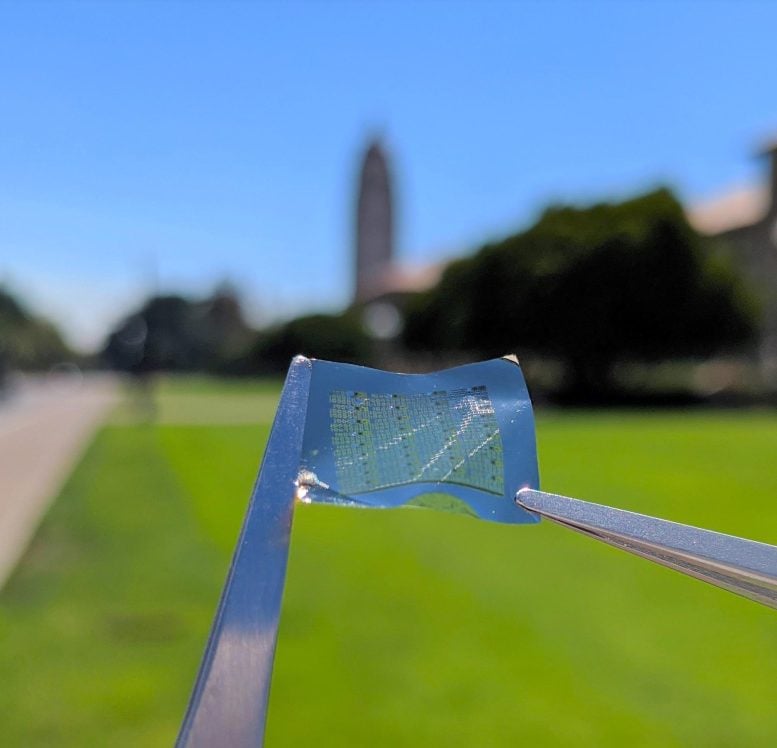
Scientists have spent decades searching for faster, more energy-efficient memory technologies for everything from large data centers to mobile sensors and other flexible electronics. Among the most promising data storage technologies is phase-change memory, which is thousands of times faster than conventional hard drives but is not the most energy-efficient among emerging memory types.
Now, Stanford University engineers have overcome a key obstacle that has limited widespread adoption of phase-change memory. The results are published in a study in the journal Science.

A flexible phase-change memory substrate held by tweezers (left) with a diagonal sequence showing substrates in the process of being bent. Credit: Crystal Nattoo
“People have long expected phase-change memory to replace much of the memory in our phones and laptops,” said Eric Pop, a professor of electrical engineering and senior author of the study. “One reason it hasn’t been adopted is that it requires more power to operate than competing memory technologies. In our study, we’ve shown that phase-change memory can be both fast and energy efficient.”
Electrical resistance
Unlike conventional memory chips built with transistors and other hardware, a typical phase-change memory device consists of a compound of three chemical elements – germanium, antimony, and tellurium (GST) – sandwiched between two metal electrodes.
Conventional devices, like flash drives, store data by switching the flow of electrons on and off, a process symbolized by 1’s and 0’s. In phase-change memory, the 1’s and 0’s represent measurements of electrical resistance in the GST material – how much it resists the flow of electricity.
“A typical phase-change memory device can store two states of resistance: a high-resistance state 0, and a low-resistance state 1,” said doctoral candidate Asir Intisar Khan, co-lead author of the study. “We can switch from 1 to 0 and back again in nanoseconds using heat from electrical pulses generated by the electrodes.”

Stanford engineers have developed a flexible phase-change memory chip that’s ultrafast and energy efficient. Credit: Asir Intisar Khan
Heating to about 300 degrees